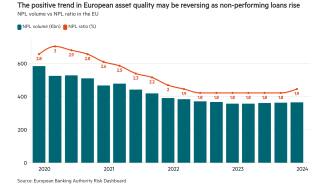The word idiosyncratic could have been coined to describe the German banking sector. And this three-pillar system – in which a handful of privately owned banks compete against less profit-oriented publicly owned regional and savings banks and a vast array of co-operative banks – has proved remarkably resistant to change, despite the abolition of state guarantees for public sector-owned banks.
While there has been small-scale consolidation, business remains split between more than 2000 banks, ensuring market share per institution is tiny when compared with other banking markets. Combined with high wage costs, strict labour laws and powerful worker representation, the result has been chronically low margins and a lack of pricing power.











